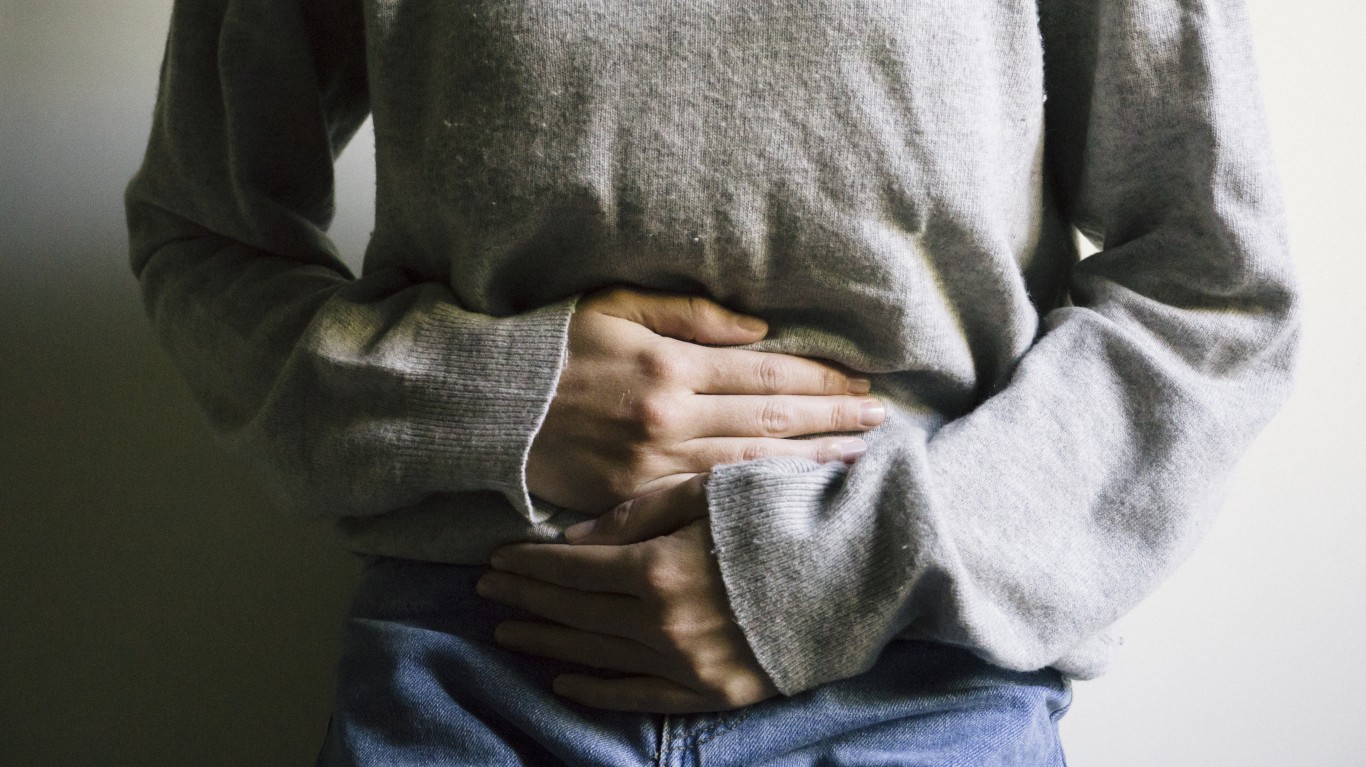
Few things in life are more unpleasant than dealing with a bout of food poisoning. Not only can it leave you laid up for days — it can send you to the hospital or worse. The CDC estimates that every year a whopping 48 million people in the U.S. contract foodborne illness, and of those, 128,000 are hospitalized and 3,000 die.
Sometimes it’s easy to figure out what the culprit was when you get sick from something you ate — that deli turkey that smelled a little funky, for example, or that leftover fish that had been in the fridge for a little too long. But oftentimes, try as we might, it’s impossible to pinpoint exactly what it was that we ate that is causing such misery.
Improper handling of food at home is responsible for a lot of food poisoning, but don’t think you’re necessarily safe just because you’re dining out in a place where professionals have prepared your dinner. Indeed, most restaurants take great pains to keep their customers from getting sick, making sure that food is stored at safe temperatures, produce is thoroughly washed, meats are fully cooked, and cross-contamination is avoided. (This is the right temperature for 20 kinds of meat and poultry.)
But it’s basically impossible to bring the risk of foodborne illness down to zero, and something’s bound to fall through the cracks occasionally. If you don’t want to take a chance of falling ill when you dine out, then, you might want to avoid ordering certain foods. (This applies to restaurant food you eat at home, too, of course. You should probably never order these foods for delivery.)
Click here to see the restaurant foods most likely to cause food poisoning
To determine which restaurant foods could be most problematic, 24/7 Tempo reviewed a list of foods that can cause food poisoning published by the Centers for Disease Control and Prevention and an article about potentially contaminated or unsafe foods from Mashed.
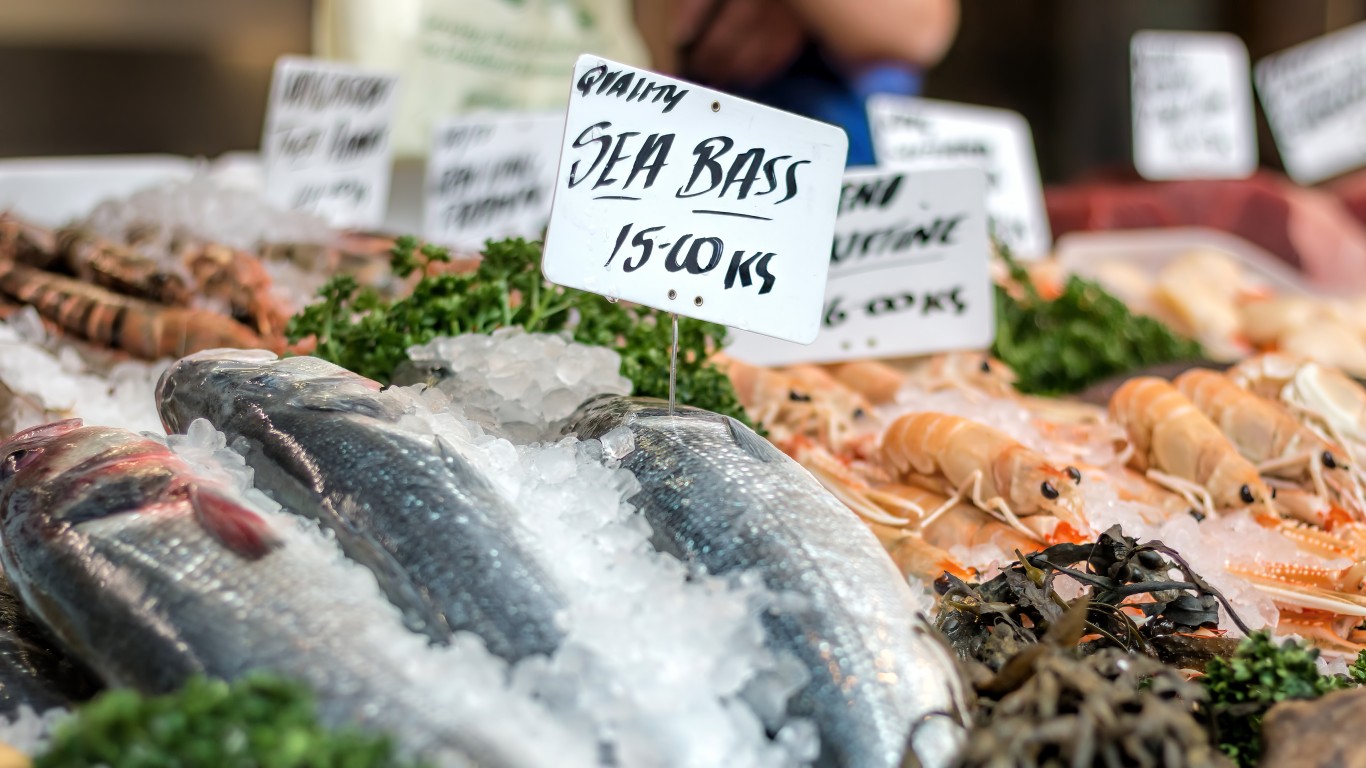
1. Sea bass
Large, carnivorous reef fish like sea bass (as well as grouper, amberjack, and sturgeon) that live in the warm waters of the Pacific and Indian Oceans and the Caribbean Sea can harbor toxins including ciguatoxin and maitotoxin, which can cause an especially nasty (if rare) form of food poisoning, according to the CDC. These toxins tend to accumulate in the liver, intestines, and head of the fish, and can’t be killed off by cooking or freezing. Along with the usual gastrointestinal issues, neurologic symptoms ranging from general malaise to a feeling that your teeth are loose can last for years.
[in-text-ad]
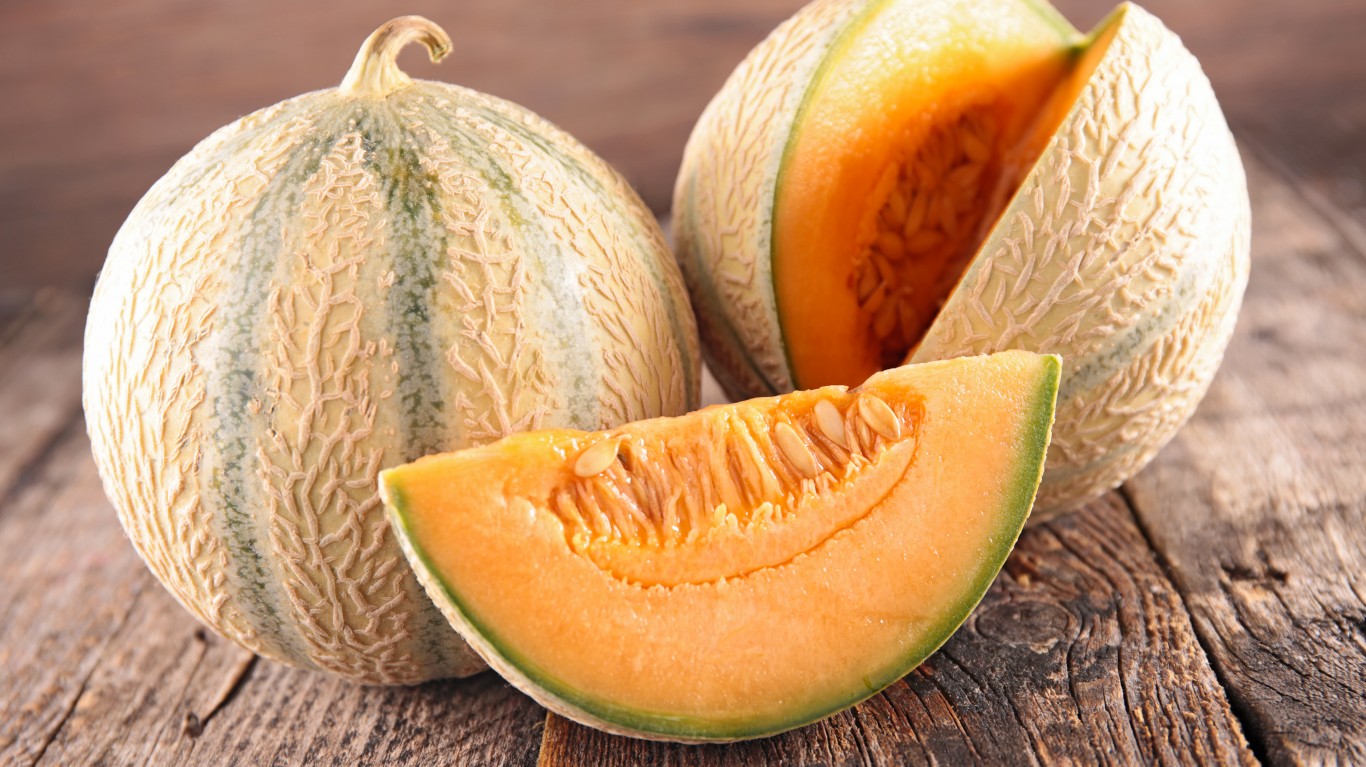
2. Melon
Melons grow on the ground, so when they arrive at a restaurant they’re usually covered in bacteria. They’re rarely washed because the skin isn’t eaten, but when they’re sliced, that bacteria can be transferred by the knife from the skin onto the flesh.
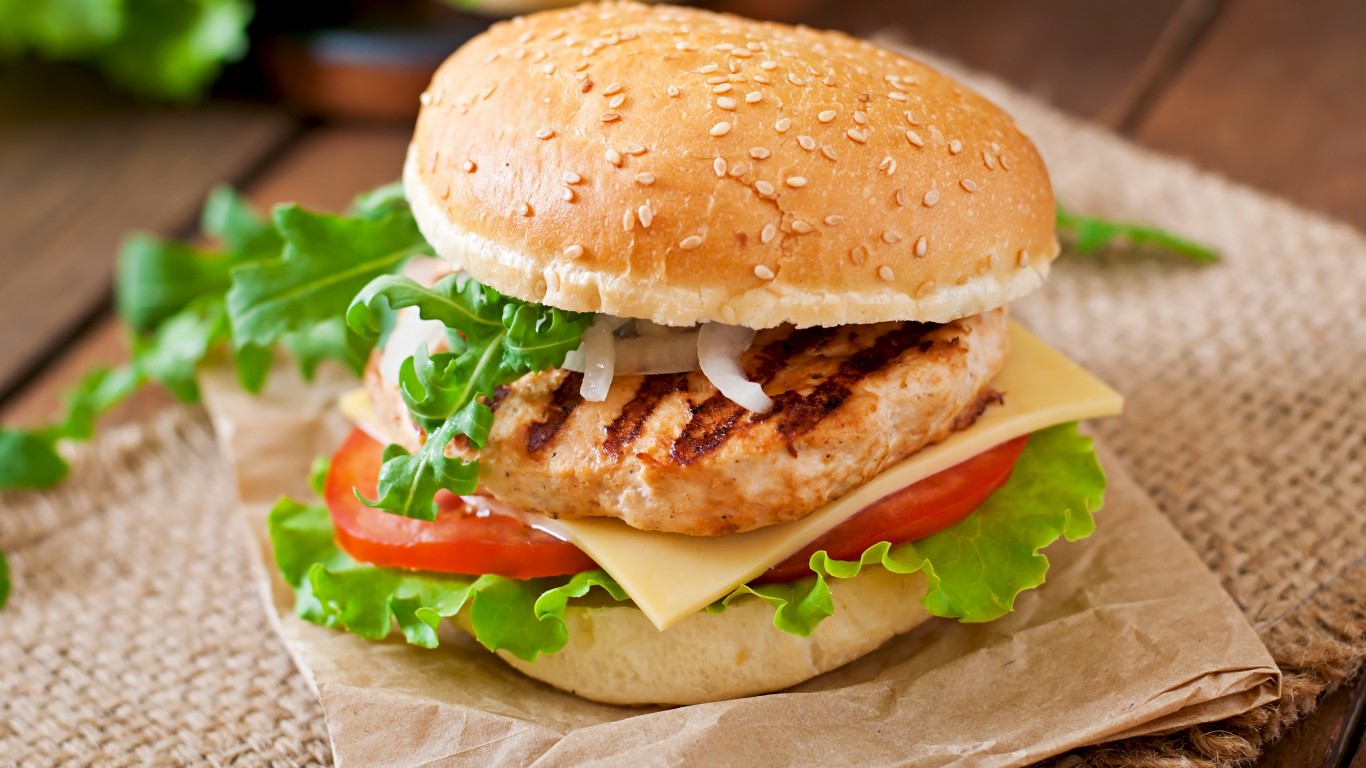
3. Poultry
The CDC estimates that every year in the United States, about a million people get sick from eating contaminated poultry. We’re obviously not saying that you should never order roast chicken again, but before you take that first bite, cut into it and make sure that it’s fully cooked. If it doesn’t look right or tastes a little funky, send it back. And definitely make sure that your turkey burgers are cooked through; Consumer Reports tested ground turkey in 2013 and discovered that up to 69% tested positive for Enterococcus and 60% for E. coli.
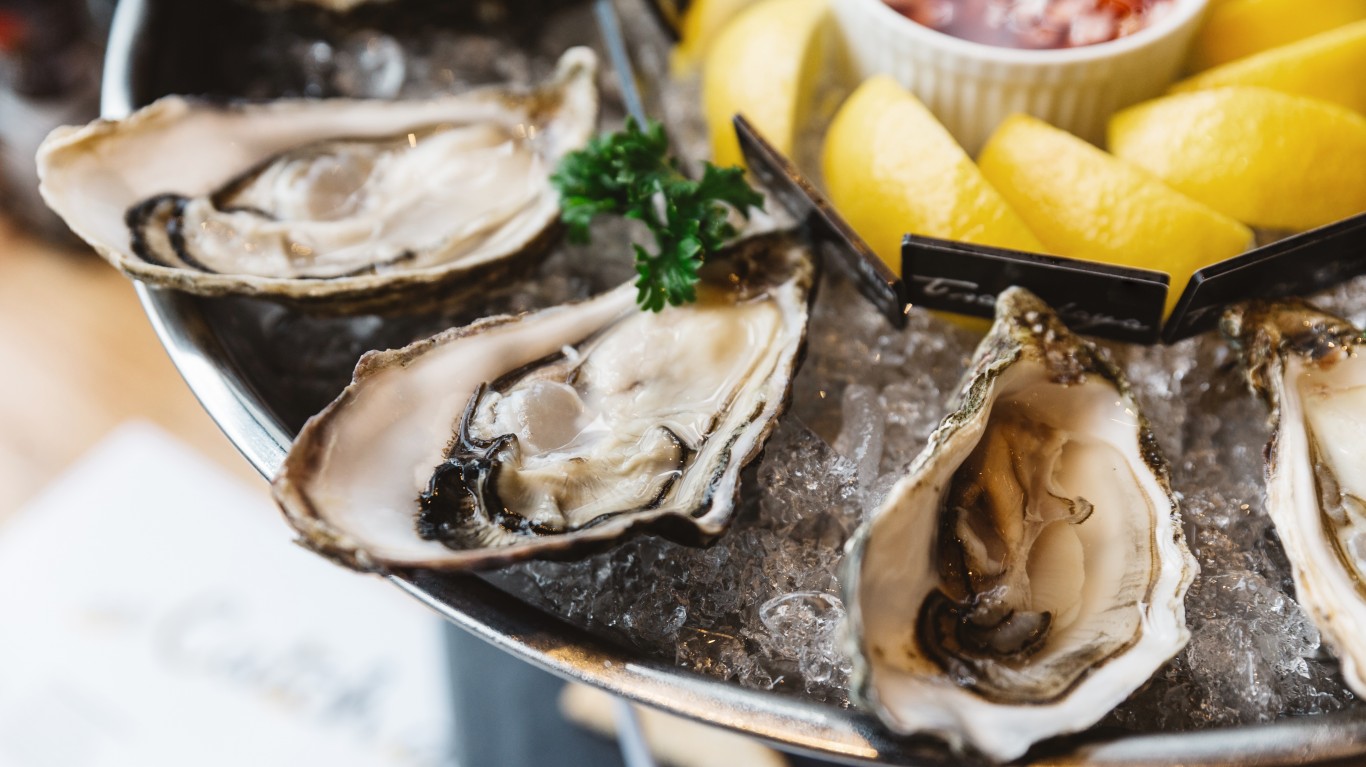
4. Oysters
Raw oysters are a beloved delicacy, and many can’t imagine a fancy meal without them. But unfortunately, even if they’re super-fresh and properly stored, eating them can put you at risk for food poisoning. That’s because oysters feed by filtering water, and the coastal waters where they live could be teeming with bacteria, especially one called Vibrio. According to the CDC, most Vibrio infections only cause vomiting and diarrhea, but severe infections can result in skin lesions, limb amputations, and even death.
[in-text-ad-2]
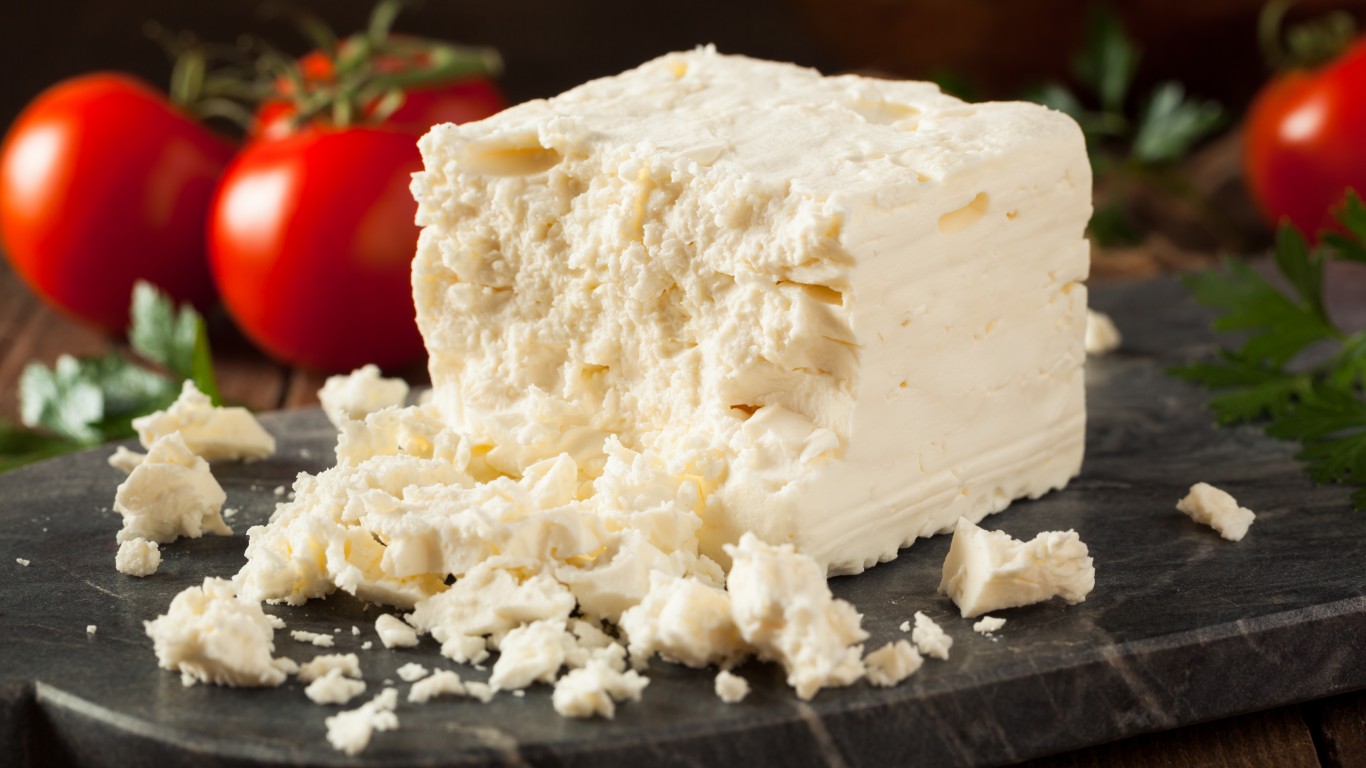
5. Feta
Soft cheeses like feta, brie, blue cheese, and camembert carry an increased risk of harboring harmful germs including Campylobacter, Cryptosporidium, E. coli, Listeria, and Salmonella, especially if they’re made from raw, unpasteurized milk. The CDC strongly advises that if you’re going to eat soft cheese, make sure it comes from pasteurized milk.

6. Roast beef
The centerpiece of any good buffet is a big slab of roast beef at the carving station, but if you’re concerned about getting sick, resist the temptation to indulge. Big roasts can harbor a type of bacteria called C. perfringens, according to the CDC, which thrives in oxygen-free environments (like inside meat). If the roast is cooked in advance and kept warm during service, it can make for a perfect medium for the bacteria.
[in-text-ad]
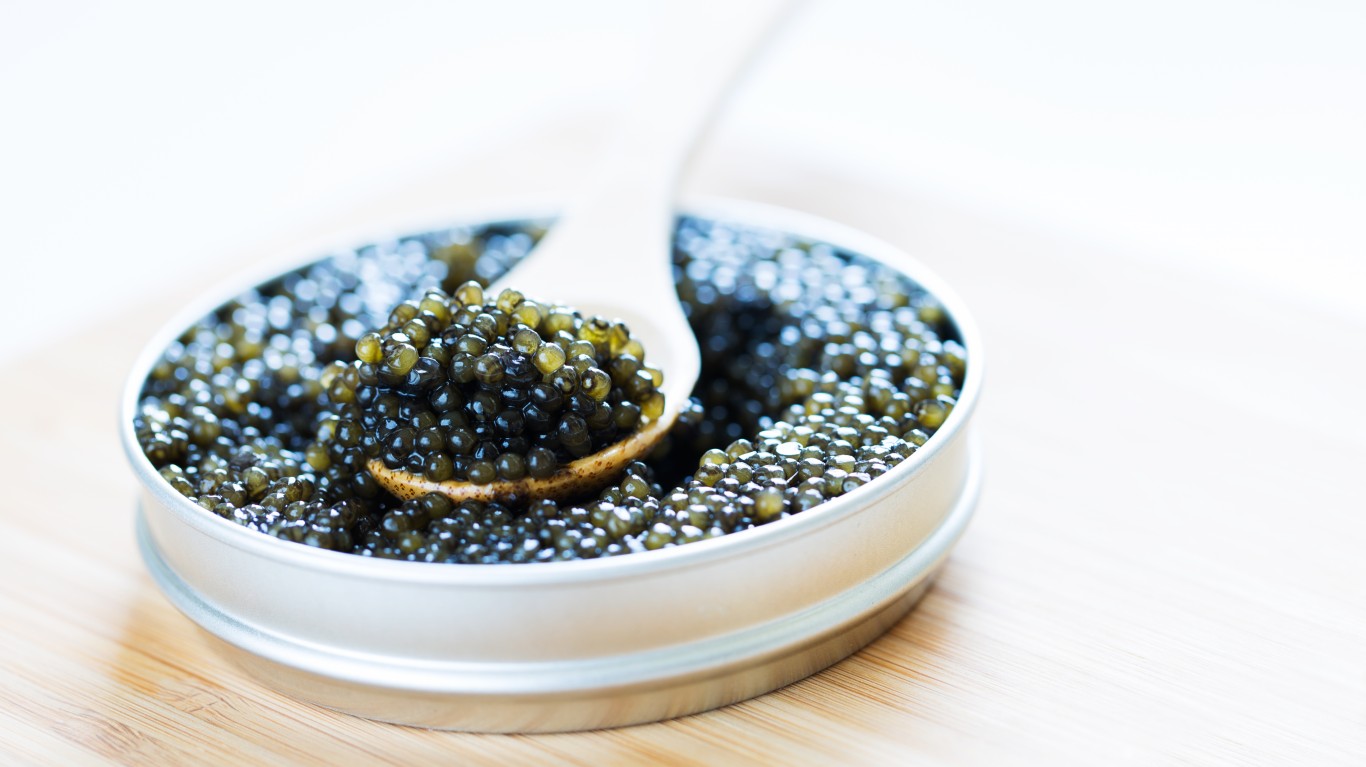
7. Fish eggs
Caviar is a beloved delicacy and fine dining staple, but it too poses a risk of food poisoning. In 2019, Roland recalled their red and black lumpfish caviar (which, admittedly, isn’t exactly the same caliber that’s served at fancy restaurants) after Clostridium botulinum, the bacteria that causes botulism, was discovered during a routine inspection. And, like many foods, if not stored at cold enough temperatures, it can become a breeding ground for harmful bacteria.
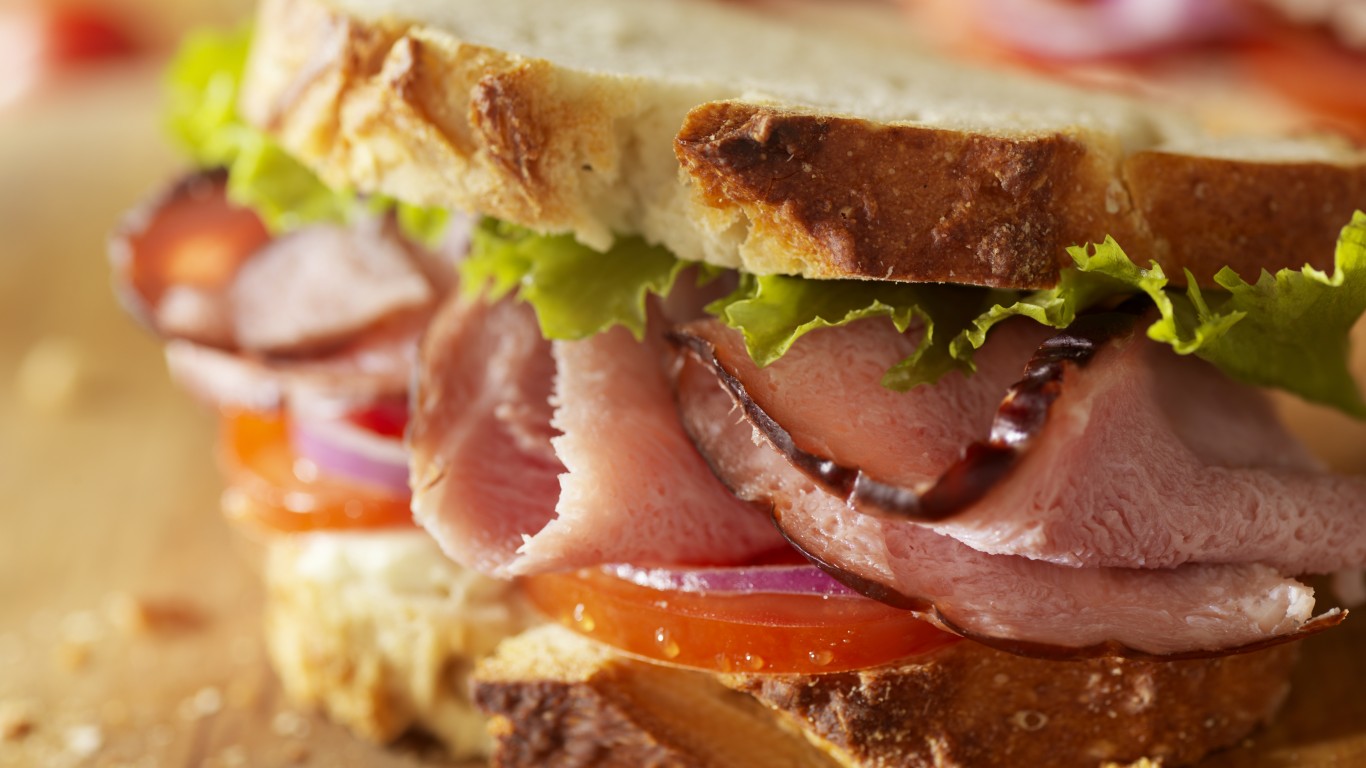
8. Deli sandwiches
According to the CDC, the foods that carry the highest risk of containing a bacteria called Staph are the ones that are uncooked and handled by people, and deli sandwiches (sliced deli meats in particular) definitely fit the bill. Symptoms of a staph infection from foodborne bacteria include nausea, vomiting, stomach cramps, and diarrhea.
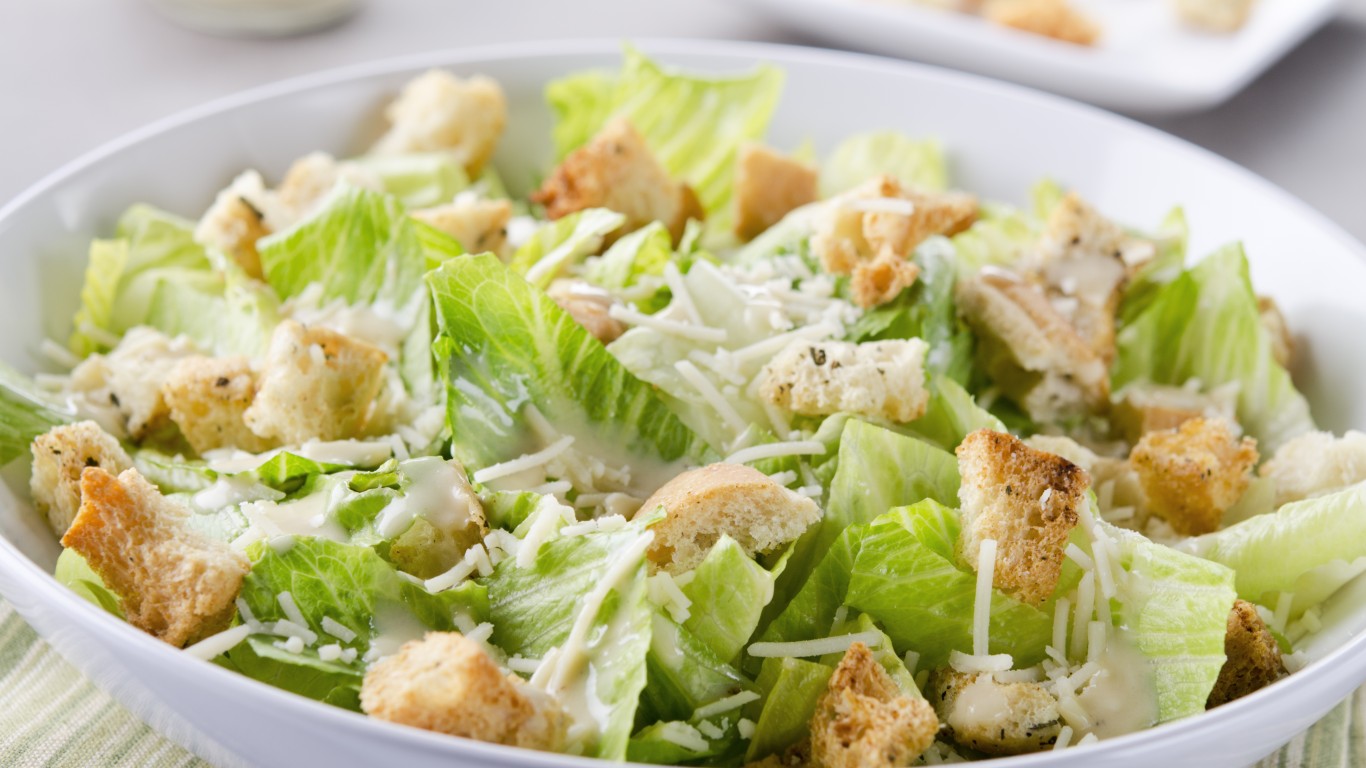
9. Caesar salad
Caesar dressing is traditionally made with raw eggs, which (if your mom ever scolded you for eating raw brownie batter) you already know is bad news. That’s because eggs can harbor Salmonella, which can only be killed if the eggs are cooked through. Many restaurants use Caesar dressing made with pasteurized eggs, however, so just ask ahead of time if the eggs are raw or not.
[in-text-ad-2]
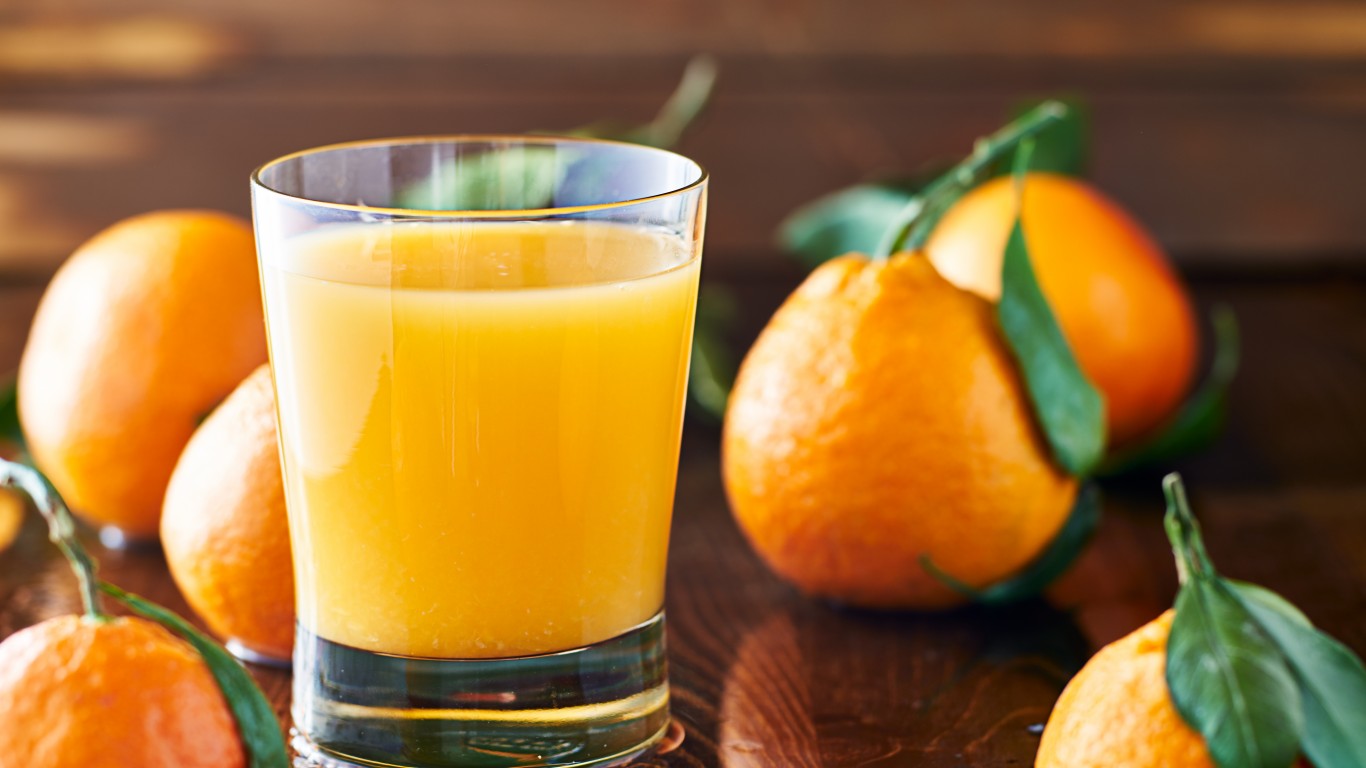
10. Unpasteurized juice
A glass of fresh-squeezed orange juice or apple cider can certainly be delicious, but unpasteurized juice can harbor some nasty bacteria, according to the FDA. The juice you’ll find at your local supermarket has been pasteurized, but many restaurants pride themselves on serving fresh-squeezed juices, so be cautious.
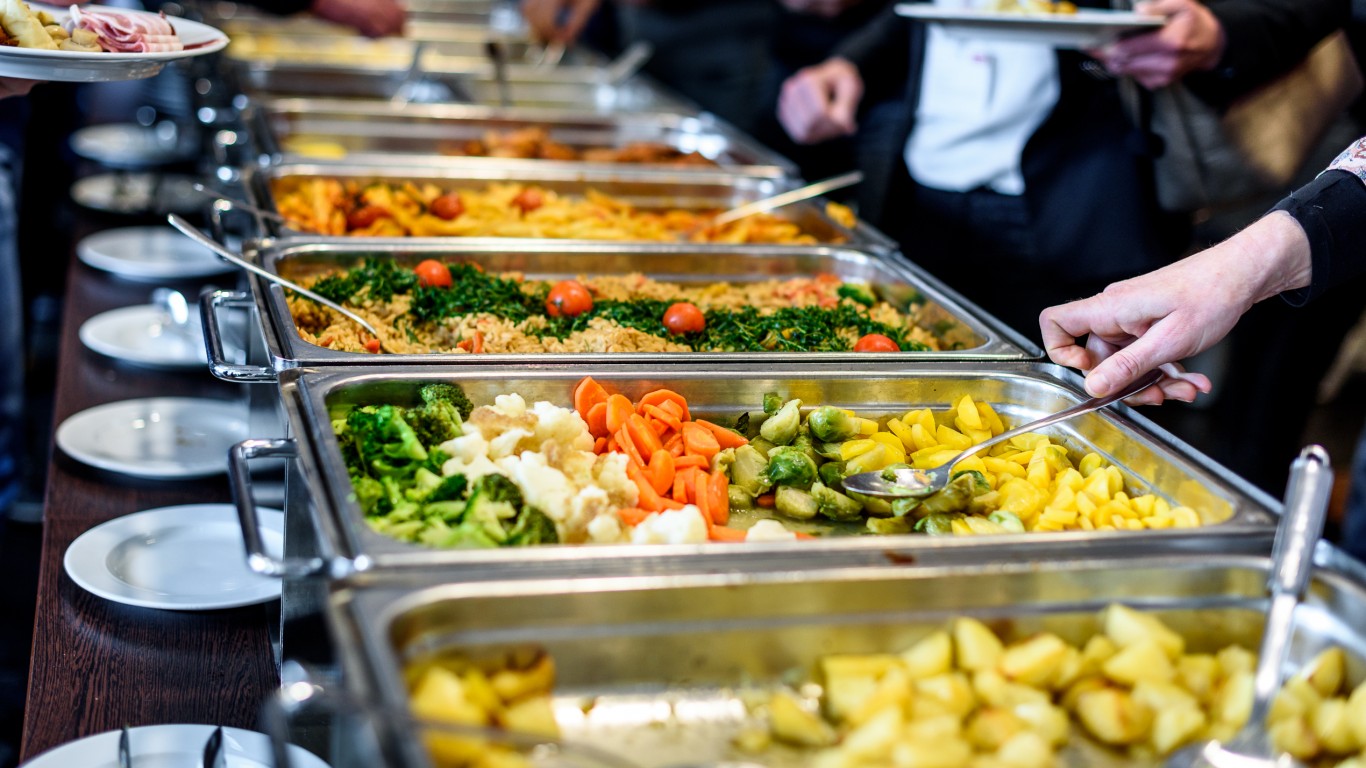
11. Buffet food
Most of us know that the very act of eating at a buffet carries inherent risks — both of eating way too much and of contracting food poisoning. The reasons for the latter should be obvious: when lots of people are helping themselves to the same trays of food, touching serving spoon handles, sneezing and coughing, and who knows that else, bugs including Listeria, Salmonella, and E. coli as well as various viruses could be transferred to the food. Also, according to the CDC, if food isn’t kept at the right temperature while on the buffet (below 40 degrees for cold food and above 140 degrees for hot) it can make for an ideal pathogenic breeding ground.
[in-text-ad]

12. Hamburgers
That medium-rare burger may be pink and juicy, but if you’re concerned about food poisoning you should probably ask for it well-done. Pathogens like E. coli and Salmonella can live on the surface of a cut of beef, but would be killed by the heat if the meat is cooked like a steak or roast. With burgers, though, the bacteria is ground into the meat, and is only killed if the interior is cooked to 160 degrees (that’s well-done), according to the USDA. The best-known burger-related food poisoning outbreak happened in 1993, when over 700 people were sickened and four died when Jack in the Box served burgers that were undercooked.
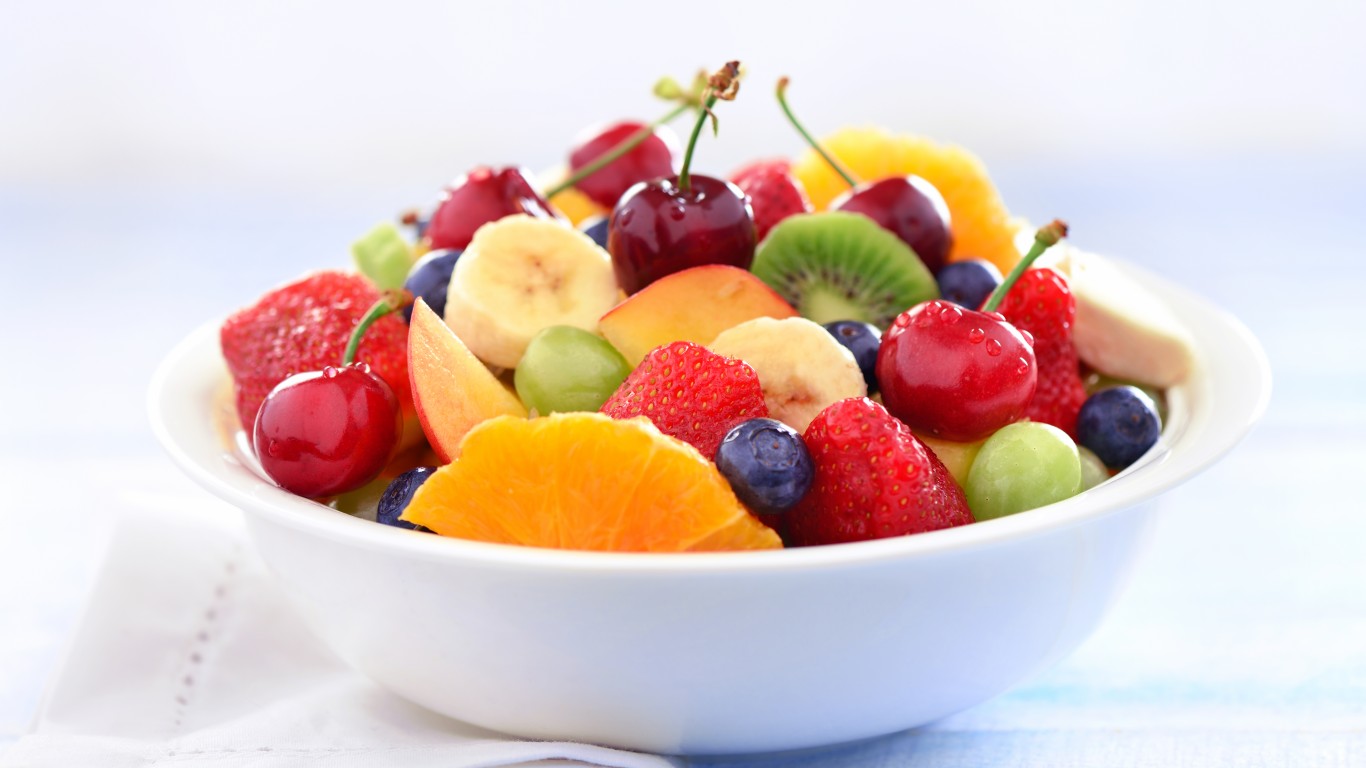
13. Fruit bowl
Just like melon, many fruits that make their way onto a fruit plate, like oranges and kiwi, can be unwashed and covered with bacteria that makes contact with the fruit when it’s peeled and sliced. And if other kinds of fruit in the bowl (berries, etc.) aren’t properly washed, according to the CDC, they could be contaminated with germs such as Salmonella, E. coli, and Listeria.

14. Sprouts
Sprouts — including alfalfa, mung bean, clover, and radish sprouts — may look harmless, but because they grow in warm, damp conditions (the perfect breeding ground for bacteria including E. coli and Salmonella) and are generally served raw, they’re a frequent cause of foodborne illness. Sandwich chain Jimmy John’s has famously been associated with several sprout-related E. coli outbreaks, most recently in 2020.
[in-text-ad-2]

15. Eggs
That runny egg on your eggs Benedict or fancy burger may be deliciously rich, but indulging comes with a not-insubstantial amount of risk. According to the CDC, unless an egg is thoroughly cooked to 160 degrees or hotter, it could be harboring Salmonella. Symptoms of Salmonella poisoning can include diarrhea, vomiting, abdominal cramps, and fever, and it can be life threatening for those younger than 5, older than 65, or with weakened immune systems.

16. Ice cream
Ice cream has been a major culprit when it comes to food poisoning in recent years, with some very high-profile outbreaks. In 2015, Texas-based Blue Bell was forced to pay $19.35 million in fine, forfeiture, and civil settlement payments (the second largest-ever amount paid in resolution of a food safety matter) after being responsible for a major Listeria outbreak, and Listeria was discovered at Jeni’s Splendid Ice Cream’s Ohio manufacturing facility in 2016.
[in-text-ad]
17. Escolar
Escolar, sometimes also referred to as butterfish or oilfish, is inexpensive, sustainable, and has a mild flavor and pleasingly buttery texture. That enviable texture, however, comes from high concentrations of wax esters in their flesh, according to a study published by the AJC. These esters have been found to cause severe gastrointestinal distress, cramps, nausea, and headache.
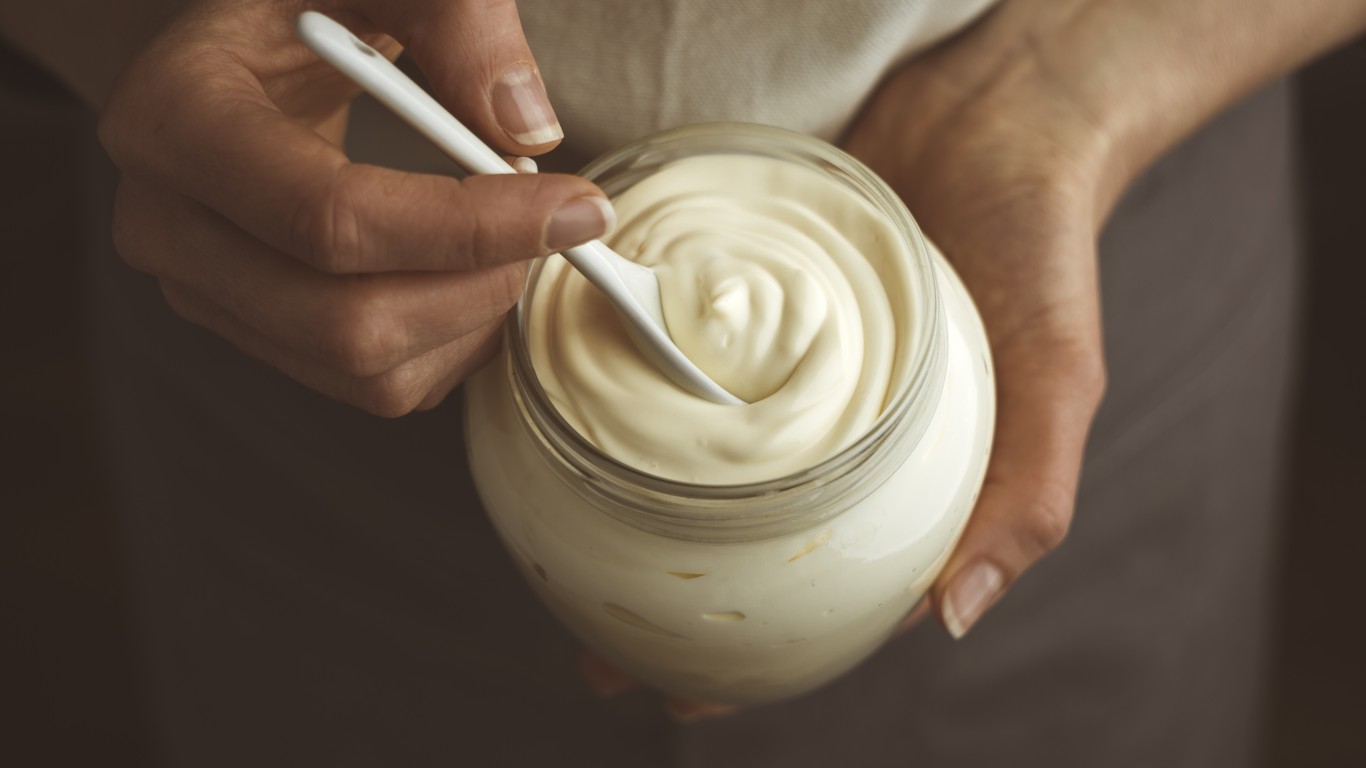
18. Mayonnaise
House-made mayonnaise generally tastes a lot better than the supermarket stuff, so many restaurants make their own. Traditional mayo recipes usually call for raw eggs, however, so for the same reason you should avoid house-made Caesar dressing and runny eggs, you should be wary of non-commercial mayonnaise (commercial brands use pasteurized eggs, which are safe). Mayo also causes problems at picnics or in other situations where it, or foods made with it (like potato salad or coleslaw), are left out too long, encouraging the growth of bacteria.

19. Fried rice
Fried rice may seem innocent enough, but it could leave you with a bout of food poisoning. This is because rice can harbor a bacteria called Bacillus cereus which can cause diarrhea and vomiting, and when rice is cooked and kept for any length of time at too warm a temperature, it becomes an ideal breeding ground for this bacteria. Fried rice is usually cooked in large batches, or kept out for too long after being taken home from a take-out. According to a 2019 article published in the journal Frontiers in Microbiology, an estimated 63,000 cases of food poisoning caused by B. cereus occur each year within the U.S., but thankfully they’re usually mild.
[in-text-ad-2]
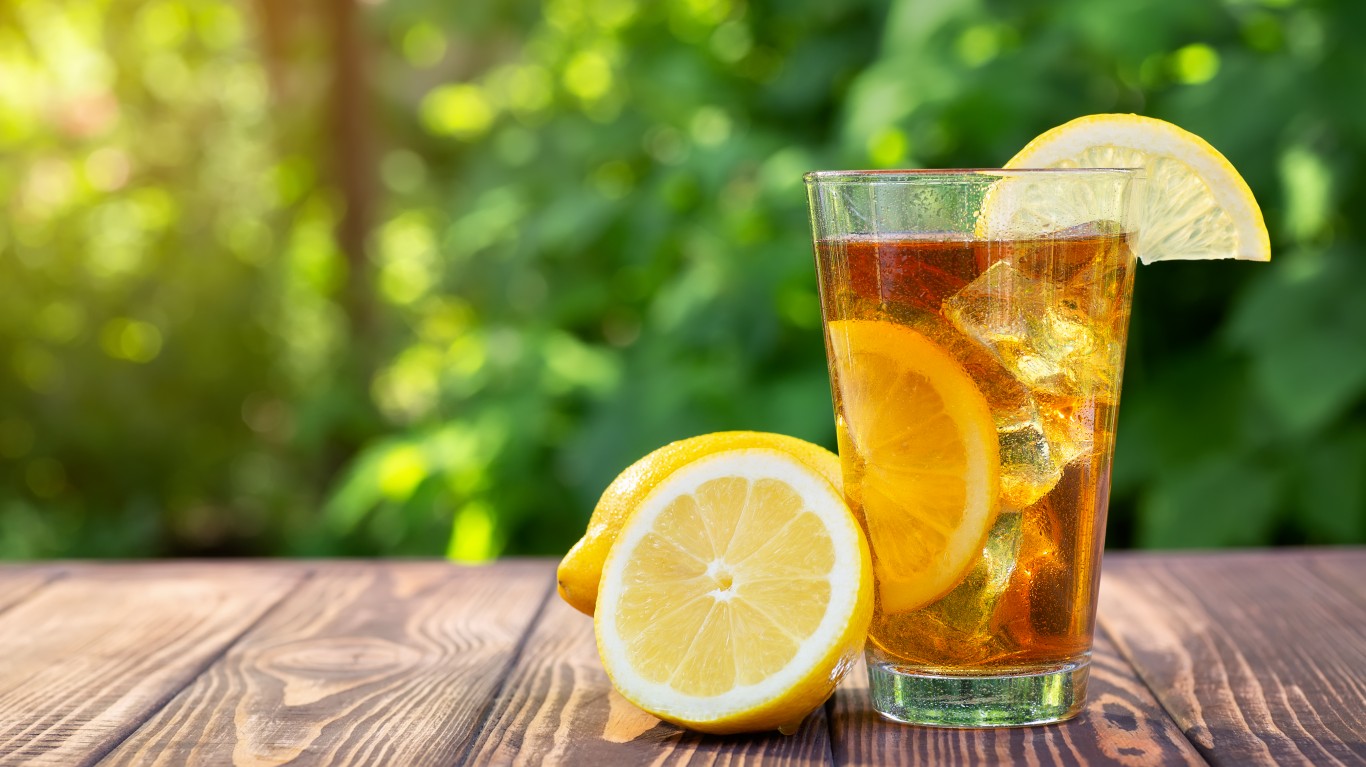
20. Any drink with lemon or ice
If a lemon or lime is unwashed before being sliced and added to your drink, or if it’s handled by someone with unwashed hands, the bacteria on the fruit can be transferred into your drink, according to a 2019 report by Food Protection Trends. (The rinds of lemons and limes are also typically loaded with pesticide residue.) And on a related subject, if those same dirty hands reach into an ice bucket to grab ice for your drink (or if the scoop they’re using is harboring bacteria), germs can make their way into your drink that way as well.
Thank you for reading! Have some feedback for us?
Contact the 24/7 Wall St. editorial team.
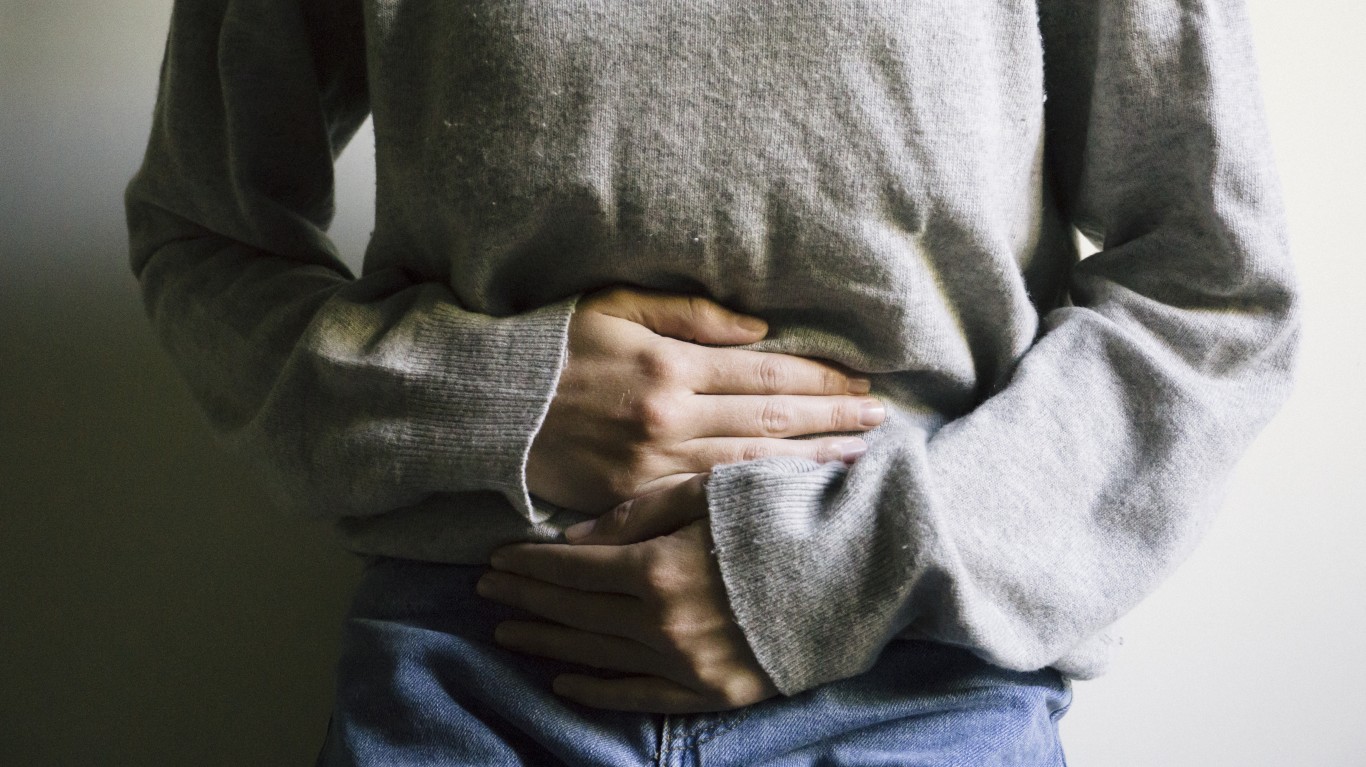 24/7 Wall St.
24/7 Wall St. 24/7 Wall St.
24/7 Wall St.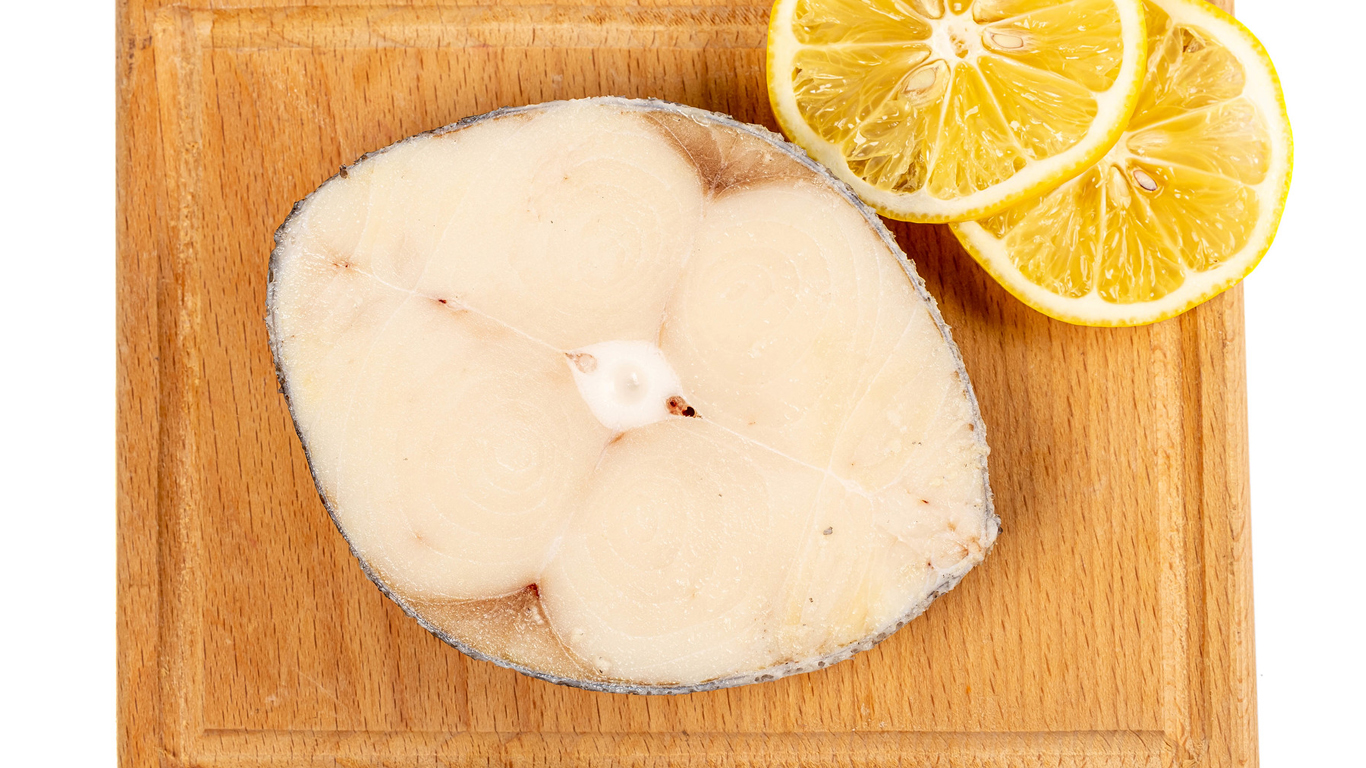
 24/7 Wall St.
24/7 Wall St.


